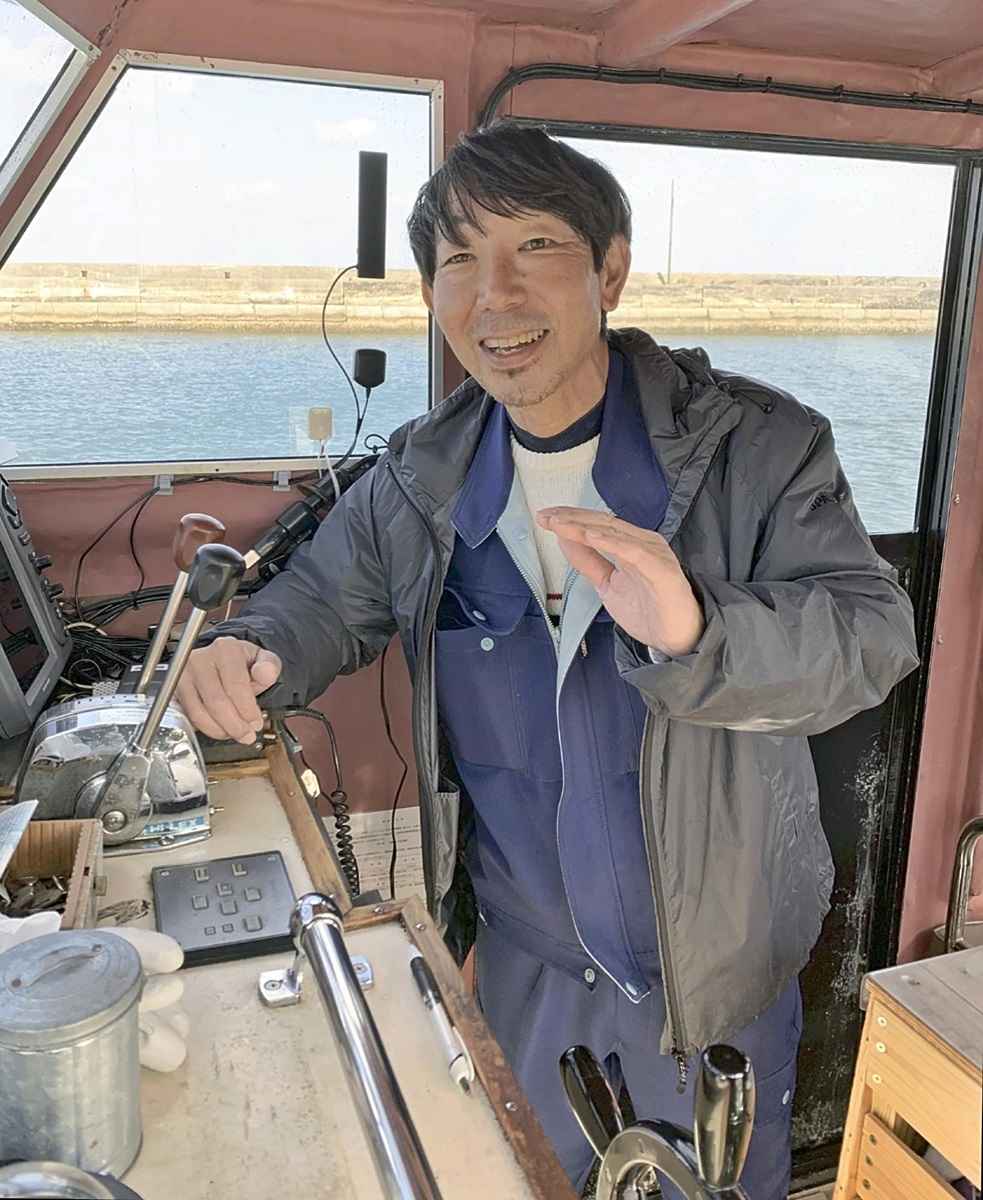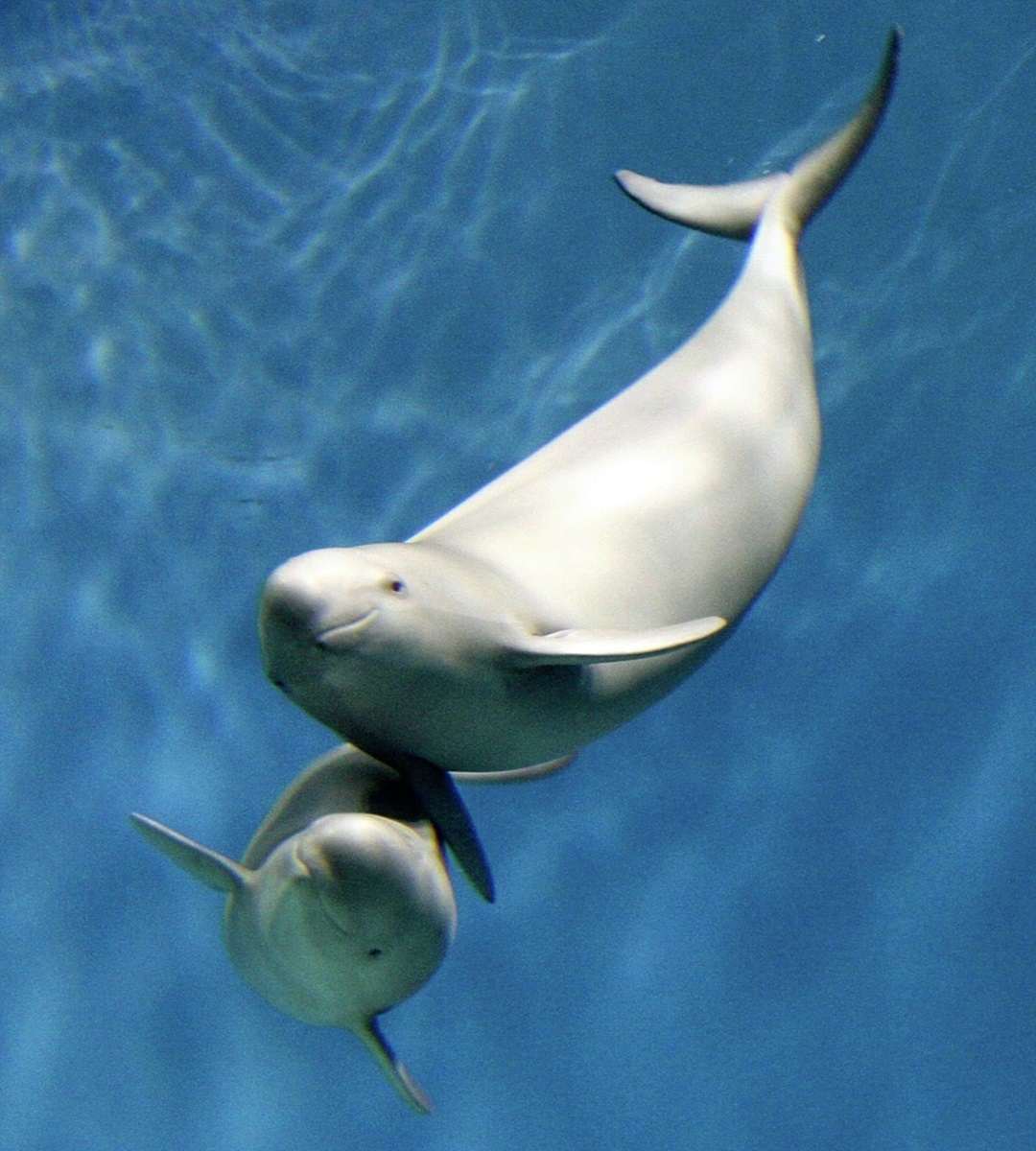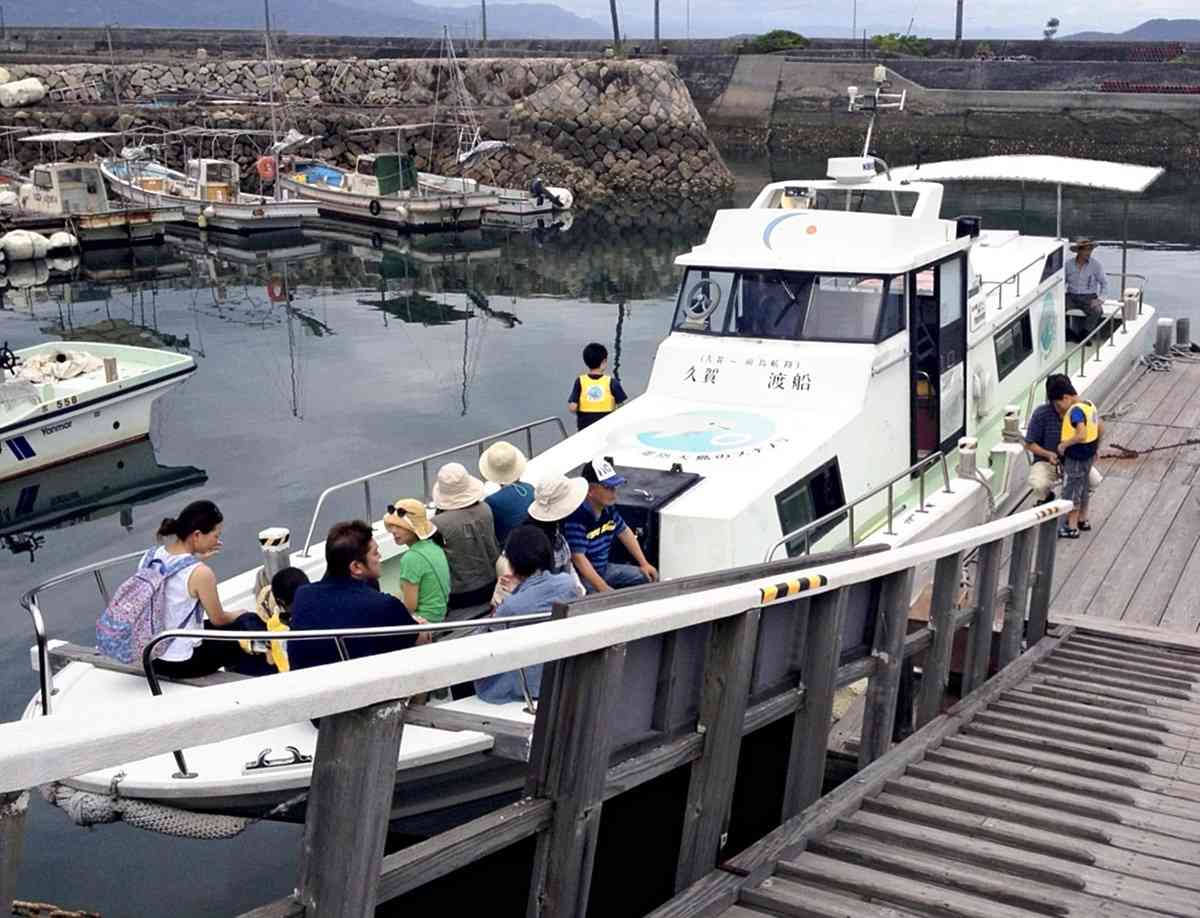Yamaguchi: Remote Japanese Island Supported by Finless Porpoise Tourism; Minor Seto Inland Sea Route Reinvigorated

Shigeki Fujitani talks about finless porpoises on the ferry.
11:49 JST, February 3, 2024
SUO-OSHIMA, Yamaguchi — Once in danger of being discontinued due to depopulation, a ferry route to a remote island is now crowded with tourists flocking to see a species of dolphin-like mammal called finless porpoises. The so-called Maejima sea route connects Kuka Port on the island of Suo-Oshima in Yamaguchi Prefecture and Maejima Island, about 6 kilometers north of the port.
Finless porpoises are about 1.5 to 2 meters long and live in various places in Japan such as the Seto Inland Sea. Shigeki Fujitani, 55, started the finless porpoise tourism project and is the ferry captain for the Maejima route. “I cannot thank the rich natural environment enough as it helps us maintain this necessary transportation for the island’s residents,” he said.

Finless porpoises swim in an aquarium.
“A finless porpoise is poking its head out of the water!” Fujitani called out to tourists one day while traveling the route, and they fixed their eyes on the sea. The tourists focused their cameras and smartphones on the glossy white head of a finless porpoise amid cries of delight.
This has become a common scene along the sea route now.
Maejima Island currently has a population of only seven residents, though it had over 80 residents living on the island in 1980. People’s continuing to leave the island resulted in a ferry operator suspending service to the island and the former municipality of Kuka took over operations.
The town of Kuka used to comprise the central part of Suo-Oshima Island and neighboring remote islands. The town became part of Suo-Oshima Town through a municipal merger.
Fujitani is also from Kuka and worked as a guide on a ferry in Shunan and other cities. He wanted to be involved in ferry-related work in his hometown once it began operating the Maejima route. In 1996, he left his job as a guide to become a town government official at the age of 28.
Fujitani eventually became the captain of the ferry on the Maejima route, fulfilling his wish.
The route up to that point had been maintained with support from the central government. However, about 10 years after Fujitani changed his job, an official from the central government told him that support for the route might be discontinued due to the decline of passenger numbers, amid other reasons.

The Maejima route is used not only to transport residents but also postal workers delivering mail and parcels to the island, except on Sundays. As well, the ferry is loaded with vegetables that residents buy from local agricultural cooperatives as well as other items that they buy online. The route is essential to sustain the lives of the residents on the island.
The existing ferry, with a gross tonnage of 9.1 tons, can operate amid waves in slightly bad weather. However, if support from the central government were to be discontinued, the town would have to operate the ferry on its own. If that were to happen, the town would have to use a smaller ferry to cut costs, which would increase ferry service cancellations.
Fujitani and the Suo-Oshima Tourism Association tried to find a solution to their dilemma. Around 2010, they came up with the idea of using finless porpoises to attract tourists.
The porpoises have lived in the sea for centuries and are called “degondo” by locals. They are nuisance for fishermen since they destroy fishing nets but have been praised on TV for their adorable appearance.
Fujitani along with others soon started to promote the project on the association’s website under the name “Finless Porpoise Cruising.” In the service’s first fiscal year, 2,900 passengers used the ferry, which was about the same as an average year.

A ferry is crowded with tourists before the COVID-19 pandemic.
However, as the cruise was featured in newspapers and other media outlets, the number of tourists gradually increased to the point where 6,100 passengers used the ferry in 2013.
Although tourist use of the ferry was suspended due to the COVID-19 pandemic, the number of passengers started to increase again after the ferry restarted tourist services in the autumn of 2022.
“I was surprised that the finless porpoises, which aren’t unusual for me, would become so popular with others,” Fujitani said.
Fujitani and three crew members keep records of where, when and how many finless porpoises they find during ferry operations every day. They offer the data they collect to the Hiroshima Institute of Technology so that it can help the institute get a grasp on the number of porpoises.
Fujitani and the crew see a total of several hundred finless porpoises a month during summer and a few once every couple of days in winter.
The recent boom in outdoor activities has resulted in tourism facilities such as glamorous camping, or “glamping,” facilities being developed in Suo-Oshima.
“I hope tourists will take the cruise to make memories with finless porpoises in their spare time while staying in Suo-Oshima,” Fujitani said.
Maejima sea route
The ferry makes three round trips a day with a one-way trip taking 20 minutes. The area around the island is known as a fishing ground for Japanese horse mackerel and other large fish such as adult yellowtail and flounder. Anglers carrying tents and fishing rods visit the island from within and outside the prefecture on weekends. The ferry can carry up to 28 passengers. A round-trip fee is ¥560 for junior high school students and older, ¥280 for elementary school students and free for preschoolers.
Related Tags
"Features" POPULAR ARTICLE
-

Sanrio to Open Museum in Yamanashi Pref. Dedicated to Founder, Exhibits Include Hello Kitty, Other Characters
-

Autumn Foliage Surrounds Visitors to Tokyo’s Showa Kinen Park
-

My Daughter No Longer Speaks to Me, But I Want to See Her and My Grandchild
-

Kumamoto: Public Bath Refurbished as Library Where You Can Chat, Take Photos
-

Frozen Vegetables: Demand Rises for Convenient, Tasty Domestic Produce
JN ACCESS RANKING
-

Tokyo Economic Security Forum to Hold Inaugural Meeting Amid Tense Global Environment
-

Keidanren Chairman Yoshinobu Tsutsui Visits Kashiwazaki-Kariwa Nuclear Power Plant; Inspects New Emergency Safety System
-

Imports of Rare Earths from China Facing Delays, May Be Caused by Deterioration of Japan-China Relations
-

University of Tokyo Professor Discusses Japanese Economic Security in Interview Ahead of Forum
-

Japan Pulls out of Vietnam Nuclear Project, Complicating Hanoi’s Power Plans



























